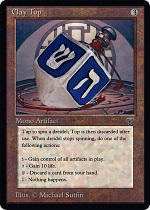Entering the Gates
Welcome to Good Gamery. We like to have fun here. But I have something serious we need to talk about. That’s right. Gates. The embarrassing also-ran of dual land cycles, gates were originally nearly unplayable, color fixing designed for limited with a few payoff spells that managed to find a place in standard, and a cheeky rare thawing glaciers variant that’s been delivering memes for a decade. But what if I told you that gates are no longer just bad fixing with some payoffs? What I were to tell you that now gates in EDH are…busted?
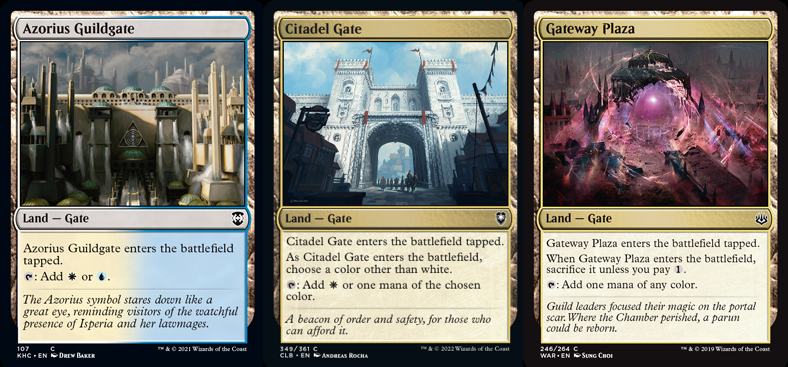
These are the ones that tap for mana. Nothing is exciting yet. You need to run these to cast your spells and enable your payoffs, but that’s it. You’re not running these based on power level, even in the most budget conscious decks. Gateway Plaza is optional since the drawback is real, but you should be running as many as you can of the two cycles based on color identity. We’ll be counting gates a lot, so we need things to count.
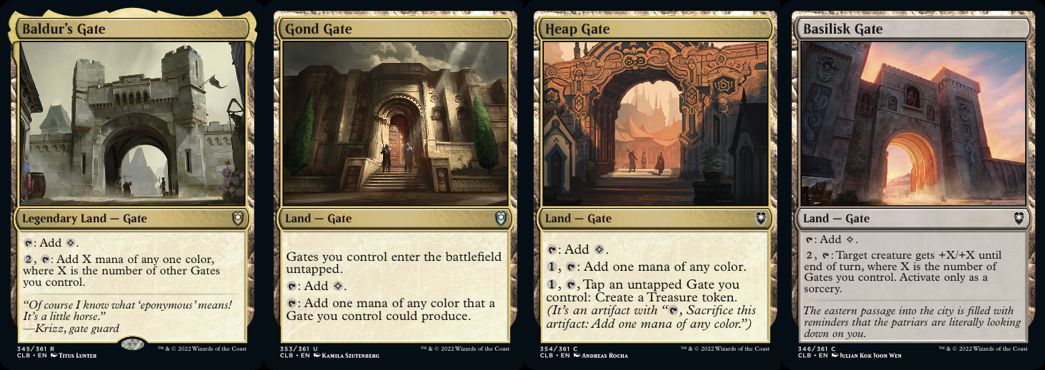
Now we’re talking! These gates don’t just slowly fix our mana. We’ve got a Cabal Coffers, a Reflecting Pool, an Amulet of Vigor, and a way to give creatures huge buffs (at sorcery speed, that part’s important!) At first these look like they’re doing a bunch of good but disconnected things. The secret, though, is that what they’re doing IS connected, at least for commander. Because what they’re doing is powering out your commander repeatedly (Baldur’s gate with a decent manabase makes paying commander tax trivial) and then making it HUGE when it attacks. (Three color commanders can get +11/11, while four or five color ones get big enough to kill with commander damage in a single hit.)
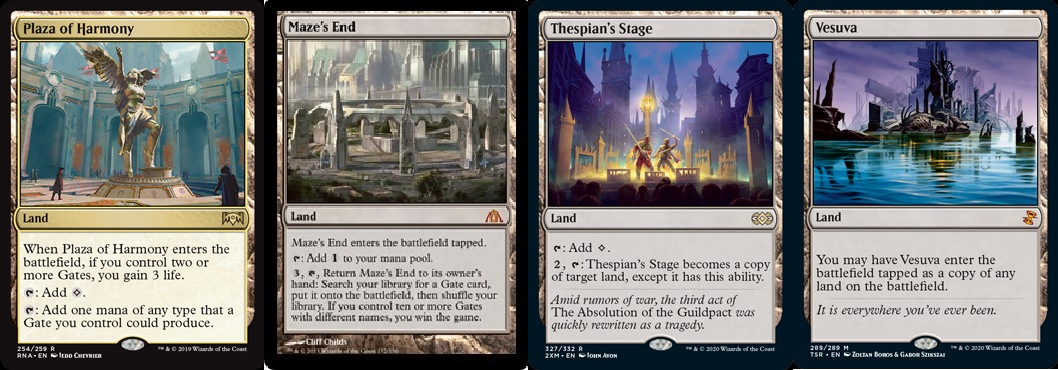
These lands aren’t gates, but they take the gate synergies to the next level. Stage and Vesuva double up whichever payoff you want more of (usually Basilisk Gate) while Maze’s End in decks with three or more colors threatens a win on its own if you can’t get your commander through for damage. The true value in Maze’s End is as a repeatable tutor, stacking your board with gates to power up your synergies. Often the table will work together to keep you from assembling ten gates….but you never needed to anyway. That was the win condition for old gates decks. We’re here to beat down!
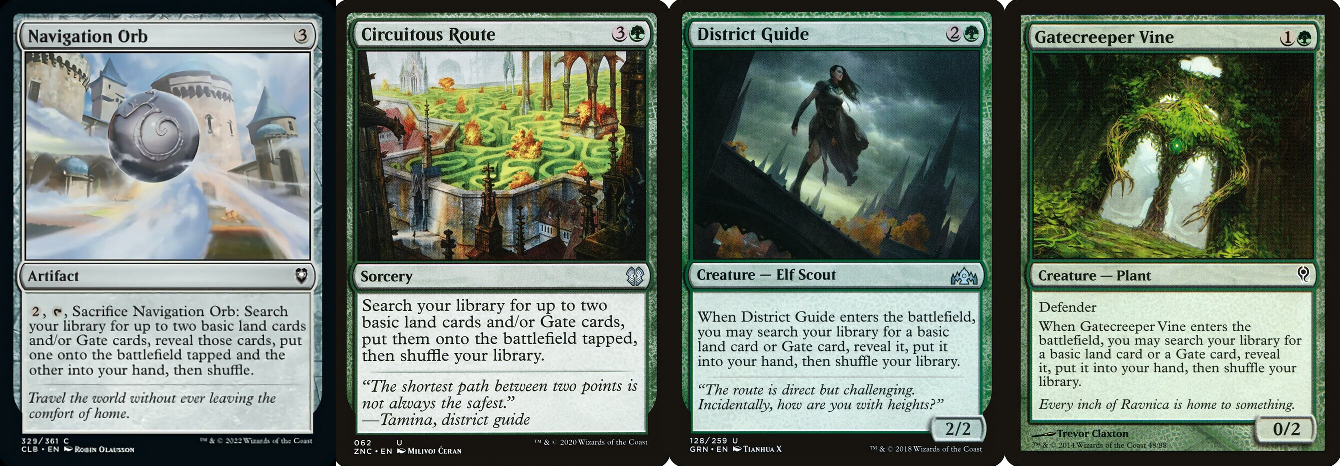
Besides Maze’s End, you’ll want a few ways to find your gates. Most of these are Green, so your gates will come online much faster in green decks, but any three-plus color deck can take advantage of the new gates. Guide and Route are the strongest options here, but all four definitely earn their slots. There’s also Open the Gates, which is an efficient play but doesn’t come with a creature or ramp you, so be careful not to fall behind if you play it early.


You’ll often want to search for lands that aren’t gates, especially Maze’s End. These are some of the best land specific tutors. Most decks won’t want to find room for all of these, but you’ll probably want several of them (or just map for decks without access to green, obviously.) Putting lands directly into play is much better than putting them in hand, and multiple lands at once is great, so I’d start with Hour of Promise and Tempt with Discovery and then add more if you want them. Pir’s Whim and Reap and Sow offer some non-creature removal, Nylea’s Intervention is a powerful sweeper for fliers, and Traverse can go find you a creature like Bane of Progress, Seedborn Muse, or Eternal Witness in the late game.
Once you’re running tutors for lands, it makes sense to run more lands to tutor for! Unlike the gates synergy lands which are mostly universal, the lands you’ll want to add depend on your strategy. Rogue’s Passage and Kessig Wolf Run can help with attacking, Glacial Chasm offers powerful defense while you use Maze’s End (especially if you’re running the instant speed Crop Rotation to find it during combat!) and lands that can become creatures like Treetop Village will mean you always have an attacker to target with Basilisk Gate, even the turn after a sweeper.
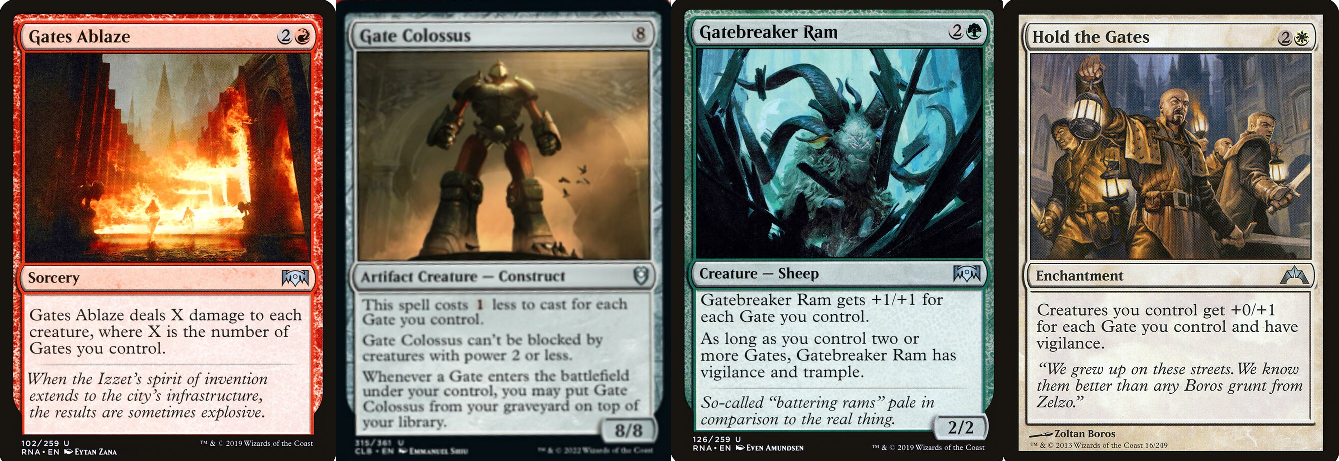
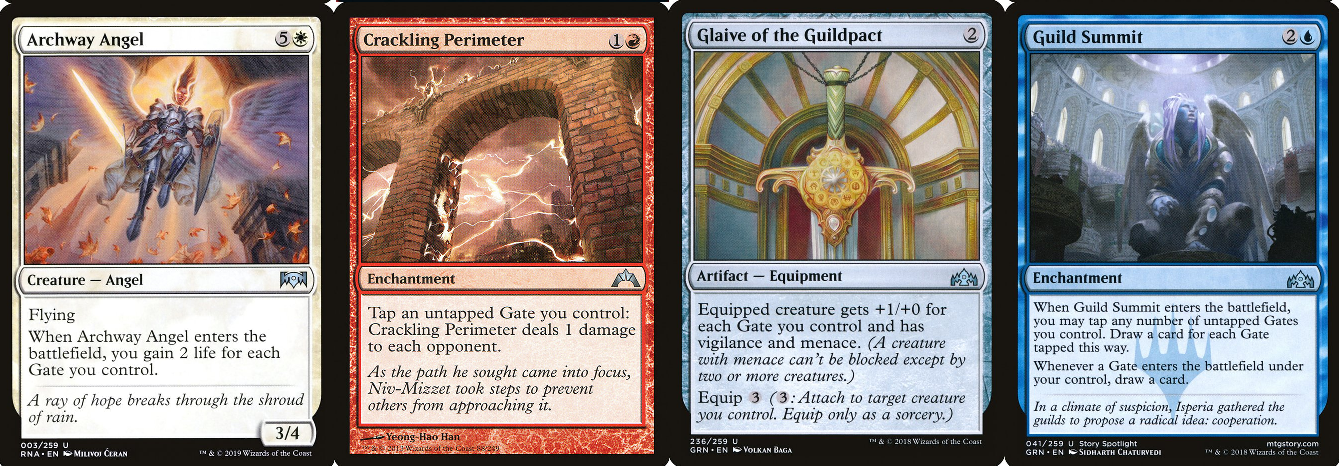
The original gate payoffs were hit or miss, but some are still powerful. Different colors offer different rewards, with some focused on attacking (helping us deal commander damage) while others aim to keep you in the game with vigilance, life gain, or creature wipes. Hold the Gates will let your creatures survive Gates Ablaze, while Ram and Angel give you evasive threats to target with Basilisk Gate.
The best part of everything we’ve talked about here? Gates are extremely budget friendly! With the exception of Maze’s End and Vesuva (both around $8-10), most of the cards in this article can be found for a dollar or much less. That means you can fit the entire gates strategy into almost any multicolor deck and add commander damage as a win condition, even if your budget is only $50!
If you want to take gates into a non-budget meta, you gain access to powerful cards like Deserted Temple, Crucible of Worlds, Seedborn Muse, and Field of the Dead. If budget is not a concern at all, you could even go so far as to use Candelabra of Tawnos to turbocharge your gates!
This article also isn’t exhaustive. I focused on green cards, but other colors also have strong tutors for lands, like weathered wayfarer or demonic tutor. Landfall in every color can benefit from Maze’s End, and commanders like four-color Omnath, Archelos, and Lord Windgrace can take special advantage of gates. Partner pairs can give you four colors for extra gates, while commanders with flying or trample can make Basilisk Gate kills even easier. The possibilities increase with each new card, and the gates are now open.
With the new gates from Baldur’s Gate, the increasing selection of multicolor commanders, and the many powerful land tutors printed since Dragon’s Maze, Gates look very different now than they did in 2013. I hope you will give them a second chance like I did, and discover their new power!




